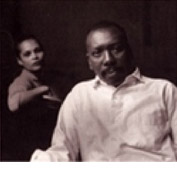
My belief is that it is most important for an artist to develop an approach and philosophy about life — if he has developed this philosophy, he does not put paint on canvas, he puts himself on canvas.
![]() rom his early training as an artist in Central Harlem to his retirement from university teaching in Seattle, Jacob Lawrence approached the creative process the way he approached his life — with an honesty and emotional integrity matched by few artists of his generation. He believed firmly that art can affect change without being pedantic; and that beauty resides equally in form as in content. For him, harmony was both an aesthetic and a social concept.
rom his early training as an artist in Central Harlem to his retirement from university teaching in Seattle, Jacob Lawrence approached the creative process the way he approached his life — with an honesty and emotional integrity matched by few artists of his generation. He believed firmly that art can affect change without being pedantic; and that beauty resides equally in form as in content. For him, harmony was both an aesthetic and a social concept.
Jacob Lawrence was the first American artist of African descent to receive sustained mainstream recognition in the United States. His success came early — at the age of twenty-four — but lasted almost uninterrupted until his death in June 2000. In the last ten years of his life, he received numerous awards, including the Presidential Medal of Arts and more than eighteen honorary post-doctorate degrees.
Jacob Lawrence’s wife Gwen Knight Lawrence was a full partner in all of his efforts, and an accomplished artist in her own right. Like Jacob, Gwen Knight Lawrence began a lifelong pursuit of art in Central Harlem in the early 1930s. Her work, which reflected her interests and training in portraiture, dance, and movement, received increasing attention from the late 1960s onward in venues around the country. She was honored with a major retrospective in 2003 at the Tacoma Art Museum and at DC Moore Gallery in New York City.
Jacob and Gwen Lawrence were both heirs and contributors to the cultural flowering of the Harlem Renaissance. Neither ever failed to give acknowledgement and thanks for their success to those who supported and mentored them in New York’s Harlem neighborhood during those early years, and both were strongly committed to helping others in turn, particularly young people. In their later life in Seattle, where Jacob Lawrence was a professor of art at the University of Washington, they were beloved members of Seattle’s cultural community who could be counted on to speak, appear, and support the arts whenever they were needed.
